- Flowers
Flower Bulbs Allium Bulbs Anemones Begonia Tubers Crocus Bulbs Daffodil Bulbs Dahlia Tubers Hyacinth Bulbs Lily Bulbs Tulip Bulbs Woodland Flower Bulbs Other Flower BulbsFlower Plants Annual Bedding Plants Children's Flower Plants Clematis Climbing Plants Cottage Garden Plants Exotic Plants Flowers For Cutting Plants Foliage Plants Greenhouse & Indoor Plants Ground Cover Plants Hanging Basket Plants Lavender PlantsHardy Geraniums Herbaceous Border Plants Heuchera Pansies and Violas Patio Plants Water Plants Window Box Plants Winter Bedding Plants Hydrangea Large impact plants Recommended By Our Experts
- Fruit & Vegetables
- Trees, Shrubs & Ornamentals
- House Plants
- Tool Shed
Garden Tools & Equipment Barrows and Trolleys Garden Solutions Harvesting Plant Supports Seed Sowing Tree Stakes Water Butts Weed Control Hand Tools Secateurs, Snips and Pruners WorkshopGarden Irrigation & Watering Irrigation Kits Water Butts Hoses & Sprays Miscellaneous Fertilisers Plant Pots Hanging Baskets Plant Protection Garden Compost All Compost
- Outdoor Living
Garden Living Barbecues & Firepits Garden Storage Solar Lights & Lighting Fixtures & Ornaments Awnings Sail Shades Garden Clocks Landscaping Lawn Edging PavingPatio Heaters Gas Patio Heaters Electric Patio Heaters Fire Pits, Chimeneas, Fire Baskets Wallmounted/Ceiling Patio Heaters Freestanding/Table Top Patio Heaters Water Features Solar Powered Water Features Mains Powered Water Features Indoor Water Features Outdoor Water FeaturesGarden Furniture Rattan Furniture Parasols Garden Benches Dining Sets Loungers Wooden Furniture Party Tents & Gazebos
- Wild Birds
- Gardening Info
- Special Offers
- • Great for small gardens. Vertical gardens take up less horizontal space, making them an excellent choice for bijou gardens, balconies and patios.
- • Looks beautiful. Well-designed, healthy vertical gardens can look strikingly beautiful. Imagine a wall of lush, green foliage, or a fence bursting with complementary florals.
- • Creates height and interest. Vertical planting can be used to divide your garden into 'rooms', to hide ugly walls or composting areas, and to bring a feeling of seclusion to your plot.
- • Deters pests. Plants grown away from the ground have less chance of being attacked by slugs - particularly plants in hanging baskets. This makes fruit and veg growing more productive.
- • Environmentally friendly. Many vertical planters and systems are made from recycled or repurposed materials. Vertical gardens provide habitats for insects and help improve urban air quality. A green wall could even help you cut down on energy costs by providing further insulation to your home.
- • Train climbers. Cover a wall or fence with climbers, wall shrubs or fruit trees trained as espaliers. Choose evergreen climbing plants such as Clematis for interest all year round, or fragrant climbers such as honeysuckle for a pleasant garden scent. Plant contrasting climbers at intervals to create stripes and patterns. Pears, apples, gooseberries, red and white currants can also be trained against a sunny wall or other sturdy support.
- • Use obelisks and trellis. These structures will create focal points and divide your space into sections - a good trick to use if your garden is long and narrow.
- • Mount planters to a wall. This is a quick and affordable way to add colour to walls and fences. Arrange hanging baskets and window boxes to create a pretty effect. (Here’s our handy guide on how to plant a hanging basket.) Or attach different sized and shaped planters to your vertical surface - make sure they’re sturdy enough to hang securely on a wall and have a flat back.
- • Plant up a dry stone wall. Use alpines to fill in the gaps between the stones, pushing them into crevices. Over time they will create a lush vertical carpet.
- • Buy a purpose-made vertical garden structure. You can buy full vertical structures as well as grow-bag-type products specially designed for walls.
Before planting up a vertical structure, grow your plants horizontally for a few weeks to let the roots establish themselves. Then, when it’s time to arrange the plants onto your structure, they will take a lot better. - • Use a climbing frame. Some plants lend themselves to being grown up a frame, such as runner beans, French beans, peas, squash, cucumbers and tomatoes.
- • Try hanging baskets and window boxes. Having crops off the ground means less chance of attack by pests and diseases. Basket tomatoes (trailing), cut-and-come-again lettuce, strawberries, dwarf beans, parsley, peas, basil, sorrel and chilli peppers all work well in containers.
- • Create a vegetable wall. Attach wire mesh to a garden wall and mount containers at different heights. Bear in mind the eventual sizes of your plants when planning where to attach them on your wall. And think about the practicalities of watering and cropping your veg. Do you really want to get the step ladder out every time you need to pick some lettuce?
- • DIY a vertical grower. Upcycle everyday items such as old pallets placed upright, half-pieces of drain pipe, plastic bottles, shoe organisers or bookshelves, into vertical growers. It’s amazing what you can do with a little imagination.
- • Invest in an aeroponic system. If you want to go a step further with your vertical growing, consider investing in a purpose-built aeroponic system, like the one pictured above. Aero-what? Aeroponics is a NASA-designed system that provides plants with water and nutrients in a soil-free environment. That means no weeding and less water. At present, these systems are on the pricey side, but as they take off they should become more economical.
- • Indoor herb garden. Growing your own fresh herbs will inspire more creative cooking and bring wonderful aromas into your home. Make use of window ledges and shelves to grow your favourite kitchen herbs. Or hang planters like the ones in the picture above.
- • Green wall. Mount stylish wall planters in your home to add vertical greenery wherever you like. Or suspend low-maintenance air plants from your ceiling with fishing wire to create a floating wall effect.
- • Use shelving. Reappropriate a stepladder or bookshelf. Cluster succulents together to create a low-maintenance indoor ecosystem.
- • Hanging indoor garden. Embrace the macrame revival with some pretty plant hangers. Fill them with spider plants, ferns and cascading succulents to create a rainforest in your front room.
- • Campanula
- • Fuchsia
- • Impatiens
- • Lobelia
- • Nasturtiums
- • Petunia
- • Pelargoniums
- • Scabious
- • Ajuga
- • Heuchera
- • Vinca
- • Pansies and Viola
- • Wallflowers
- 'How to' Gardening Guides
- How to plant hanging baskets and containers
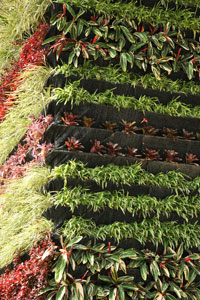
Vertical gardens may bring to mind the current trend for 'green walls' and 'green roofs' but any type of planting on walls, fences or other structures can be included.
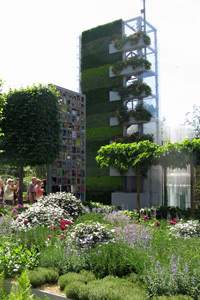
A vertical garden at the Chelsea Flower Show.
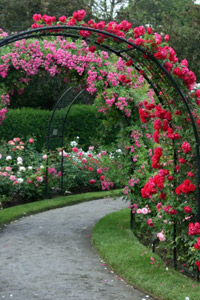
Grow plants over trellis or pergolas to add height and interest - use climbing roses for a classic cottage garden look.
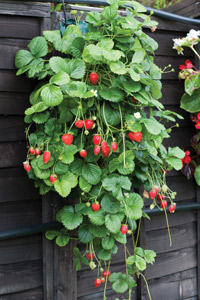
Strawberries grow well in flower pouches, hanging baskets and window boxes and they're at less risk of attack by slugs.
Join Our Gardening ClubVan Meuwen Gardening Club
Become a Member
Join our Gardening Club to unlock exciting perks and discounts!
JUST £10 for one year's membership
10% OFF EVERY order placed online £20 worth of Van Meuwen Vouchers Exclusive members only deals Join NowVertical gardening
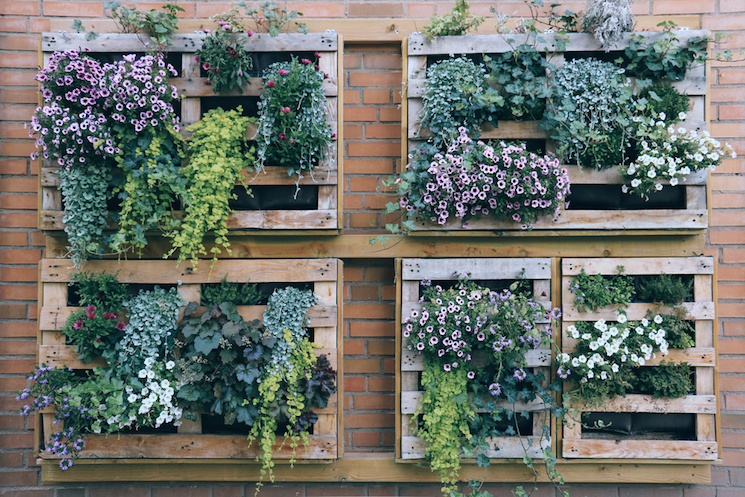
Vertical gardens work well in any sized garden.
Image: ShutterstockVertical gardening is a great way to make the most of your outdoor space. Growing upwards brings a new dimension to your garden, allowing you to create stunning effects and make the most of your patch - however small it may be. You can even use vertical gardening to bring some on-trend green design into your home.
What is vertical gardening?
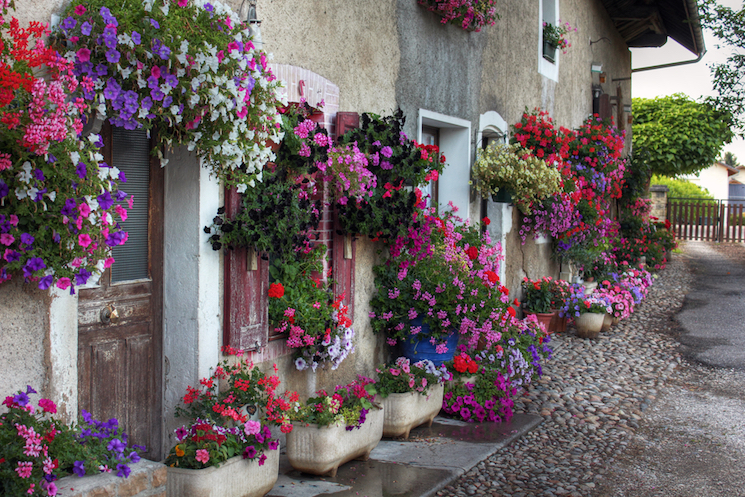
Hanging baskets and window boxes are a traditional way to garden vertically.
Image: ShutterstockQuite simply, vertical gardening means growing plants on a vertical plane, such as a wall, a fence, or a specially designed vertical-planting system. People have been growing up (and down) for thousands of years - think The Hanging Gardens of Babylon, or Machu Picchu, for example.
Hanging baskets, pergolas and trellis are vertical-gardening stalwarts. Recently there has been a trend towards taking this even further with eco-friendly ‘green roofs’ and stunning ‘living walls’.Why try vertical gardening?
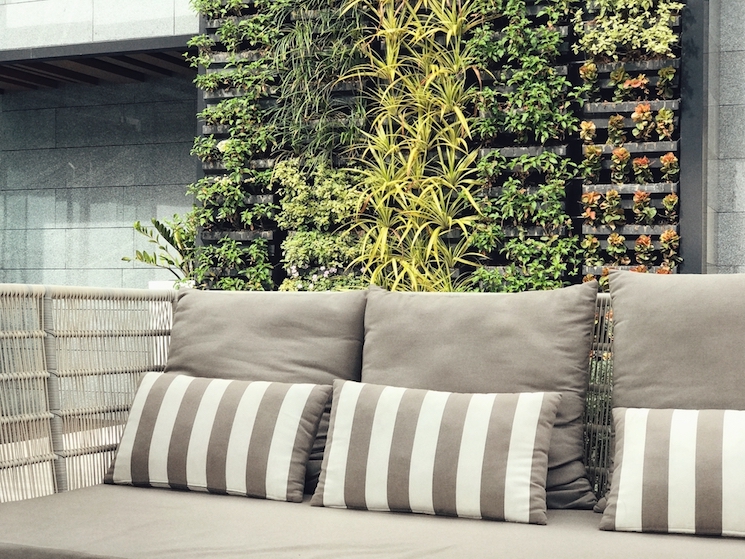
Vertical gardening creates secluded areas and hides unsightly corners.
Image: ShutterstockThere are many reasons to give vertical gardening a go:
How does a vertical garden work?
There are many types of vertical gardens and they all work in different ways. The most complex are unified systems where water and nutrients are fed into the top of a structure, trickling down to the bottom to be redistributed from the top all over again. Other vertical gardens comprise a collection of independent containers, which each require their own water and feed.
How to make a vertical garden
There are many types of vertical garden. Here we’ll be looking at three categories: living walls; vertical veg gardens; and indoor vertical gardens.
How to grow a living wall
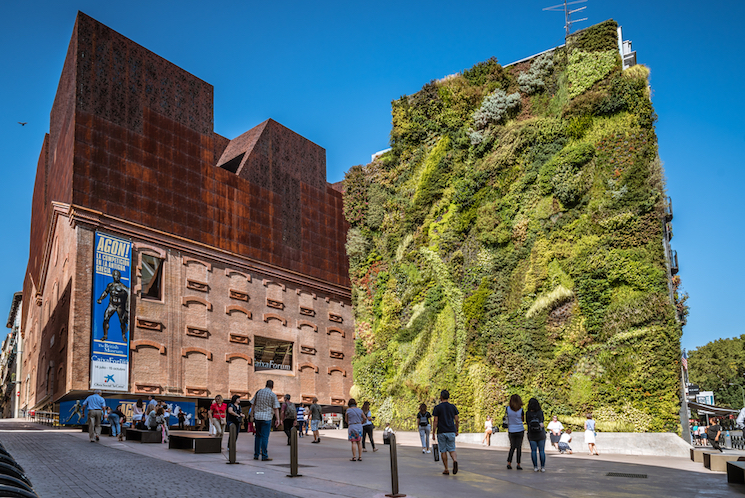
CaixaForum, Madrid with its exquisite living wall.
Image: ShutterstockThe stunning living walls seen in major cities centres around the globe - like the Madrid example pictured above - are expensive to recreate. Planted on specially designed felt, and watered and fed with an internal automatic irrigation system, they need professional installation and maintenance.
While this kind of planting is beyond reach for most of us, there are ways to create a similar effect without breaking the bank:
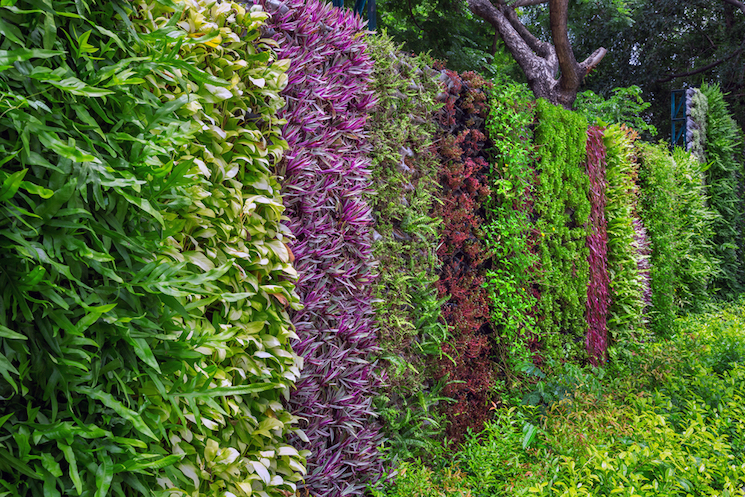
Grow contrasting climbers at intervals to create patterns.
Image: Shutterstock
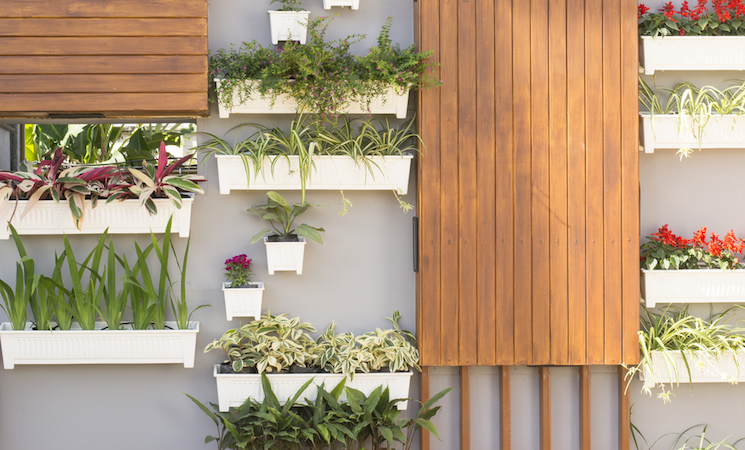
Wall-mounted planters break up a plain exterior surface.
Image: ShutterstockHow to grow a vertical vegetable garden
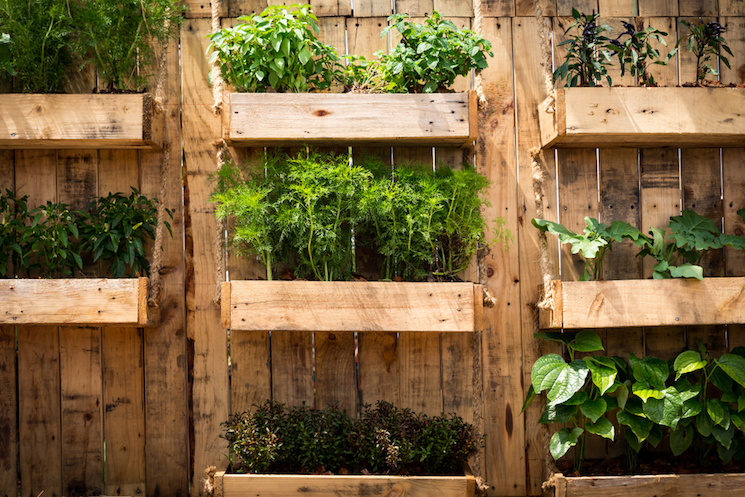
Make the most of your space with a vertical veg patch.
Image: ShutterstockVertical growing is a handy way to make the most of your space for home grown produce. Here are some ways to do it:
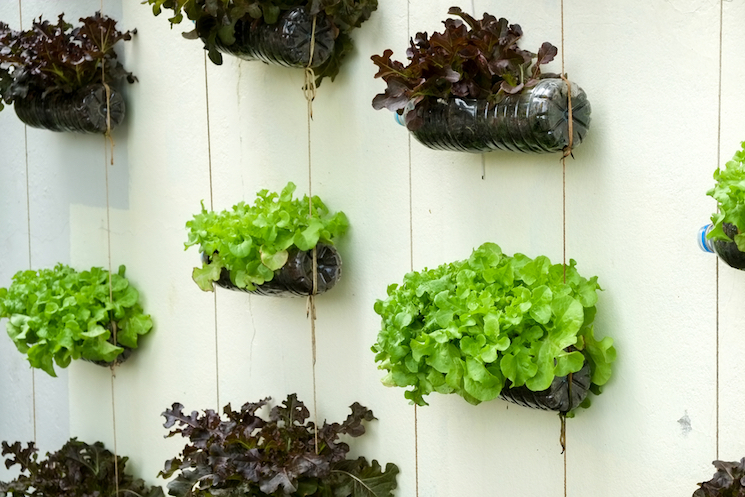
Recycled plastic bottles make ideal planters for lettuce.
Image: Shutterstock
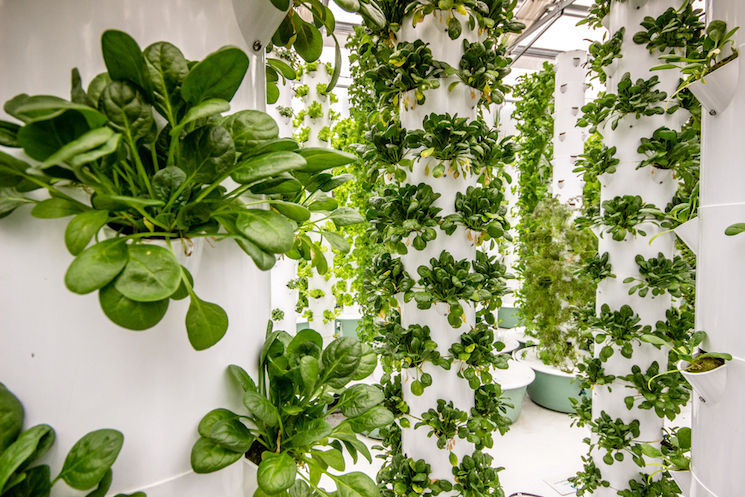
A vertical, aeroponic food farm.
Image: ShutterstockHow to grow an indoor vertical garden
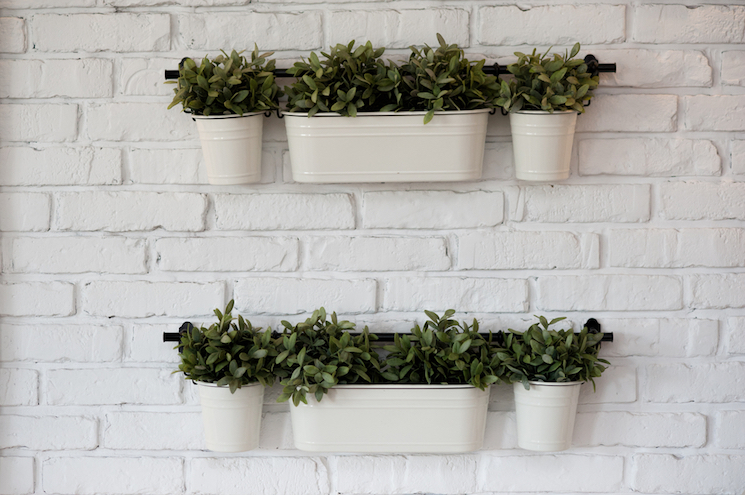
Create a hanging herb garden in your kitchen.
Image: ShutterstockThe vertical gardening trend isn't limited to the great outdoors. Architects, interior designers and chefs have embraced the phenomenon to create beautiful indoor gardens. Here are some ideas to try:
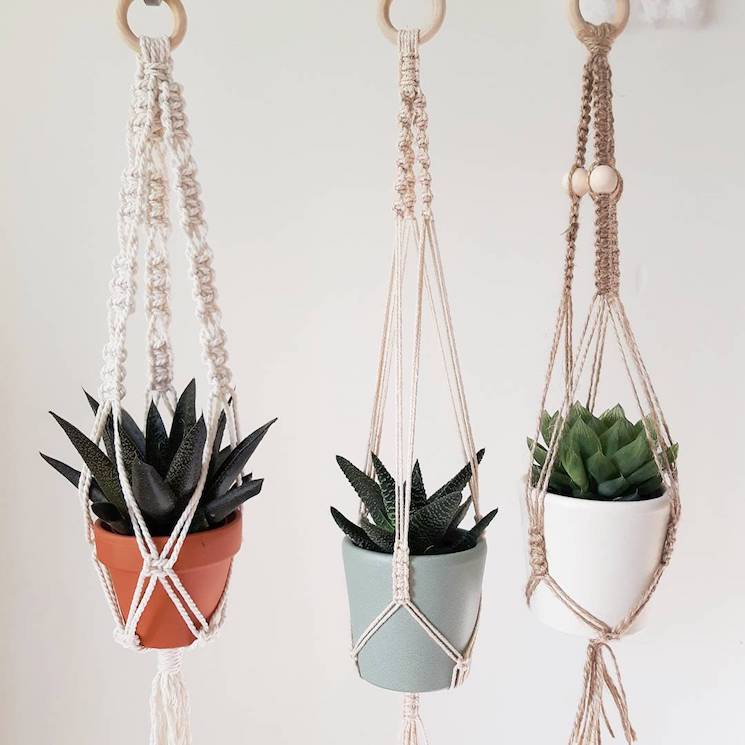
Create a beautiful hanging garden in your living room.
Image: @ola.falastudioHow to water a vertical garden
When it comes to watering your vertical garden, advice will depend on the system you have in place. If you have a unified structure, you’ll need to water and feed your garden from the top; gravity will pull moisture and nutrients down through the system. Put plants that don’t need as much water at the top of the system, as these dry out more quickly. Plants that prefer damp conditions will thrive best at the bottom of the structure.
With a vertical container garden, you will need to water and feed each container individually.
You’ll still need to bear in mind the moisture needs of your plants - those placed higher up will still dry out more quickly as they’ll be more exposed to wind. Thirsty plants might be better placed towards the base.Best plants for a vertical garden
Your vertical garden can be planted with annuals, perennials, herbs or vegetables.
Match your plants to the environment of vertical plot. For example, plants from hotter climates will thrive on warmer, more protected, south-facing walls and fences. Plant things like:If your vertical space gets less than half a day of sun in the middle of summer, it’s better to opt for shade-loving plants. This could include things like:
Think about the shape, colour and texture of the plants you choose to give your display real impact. And focus on compact plants that won’t get too big and heavy.
Vertical gardening is a huge subject, and we’ve only scratched the surface here. We hope we’ve given you the information you need to get started on your vertical gardening project, and we’d love to see the results. Share your photos with us on our Facebook page or tag us on Instagram.Quick Links:
Sign up to the Van Meuwen Gardener's Club for Special Offers
Delivery Information Privacy Policy Cookies Terms of Business Affiliate Programme Planting & Cultural Advice Contact Us© 2025 Van Meuwen. All rights reserved. A division of Branded Garden Products Limited.
- House Plants
